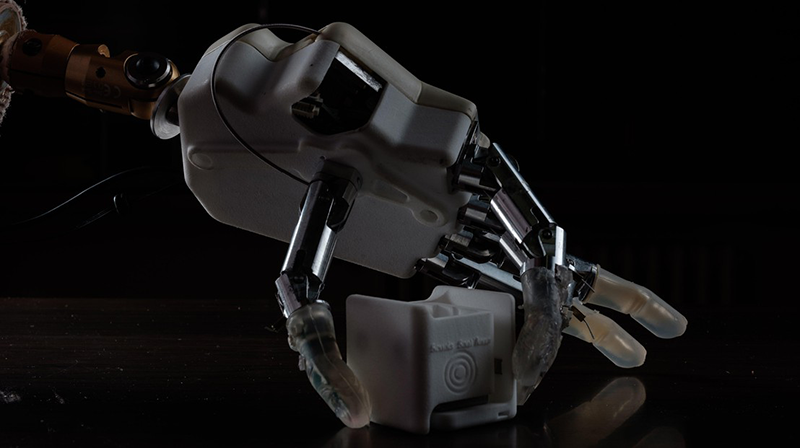Proprioception is the sense of the relative position of one’s own parts of the body and strength of effort being used in movement. Because of proprioception we are able to walk down a sidewalk without looking down on our feet, throw a ball without with our eyes closed or talk without mumbling. Proprioception lets us know how our hands and feet are moving or what our mouth is doing. But people who use prosthetic devices do not have proprioception. Now, researchers at Ecole polytechnique fédérale de Lausanne in Switzerland (EPFL), the Sant’Anna School of Advanced Studies in Pisa and the A. Gemelli University Polyclinic in Rome, have developed new prostheses that can relay their position to the user, enabling amputees to regain a very subtle, close-to-natural sense of touch.
Related Swedish Woman Receives First Dexterous and Sentient Prosthetic Hand
“The new device allows patients to reach out for an object on a table and to ascertain an item’s consistency, shape, position and size without having to look at it. The prosthesis has been successfully tested on several patients and works by stimulating the nerves in the amputee’s stump. The nerves can then provide sensory feedback to the patients in real time – almost like they do in a natural hand,” reports EPFL.

With the currently available prostheses, patients can regain voluntary motor control of their artificial limb by exploiting residual muscle function in the forearm. But as there is no sensory feedback they have to rely heavily on visual cues. This can prevent them from feeling that their artificial limb is part of their body and make it more unnatural to use.
Several research groups recently were able to provide tactile feedback in amputees, leading to enhanced function and prosthesis embodiment. But this latest study has taken things one step further.
Related Electronic Skin for Prosthetic Hands Lets Amputees Feel Pain
“Our study shows that sensory substitution based on intraneural stimulation can deliver both position feedback and tactile feedback simultaneously and in real time,” explains Silvestro Micera, a professor of bioengineering at EPFL’School of Engineering and the Sant’Anna School of Advanced Studies. “The brain has no problem combining this information, and patients can process both types in real time with excellent results.”
The findings of the study were published in the journal Science Robotics.












